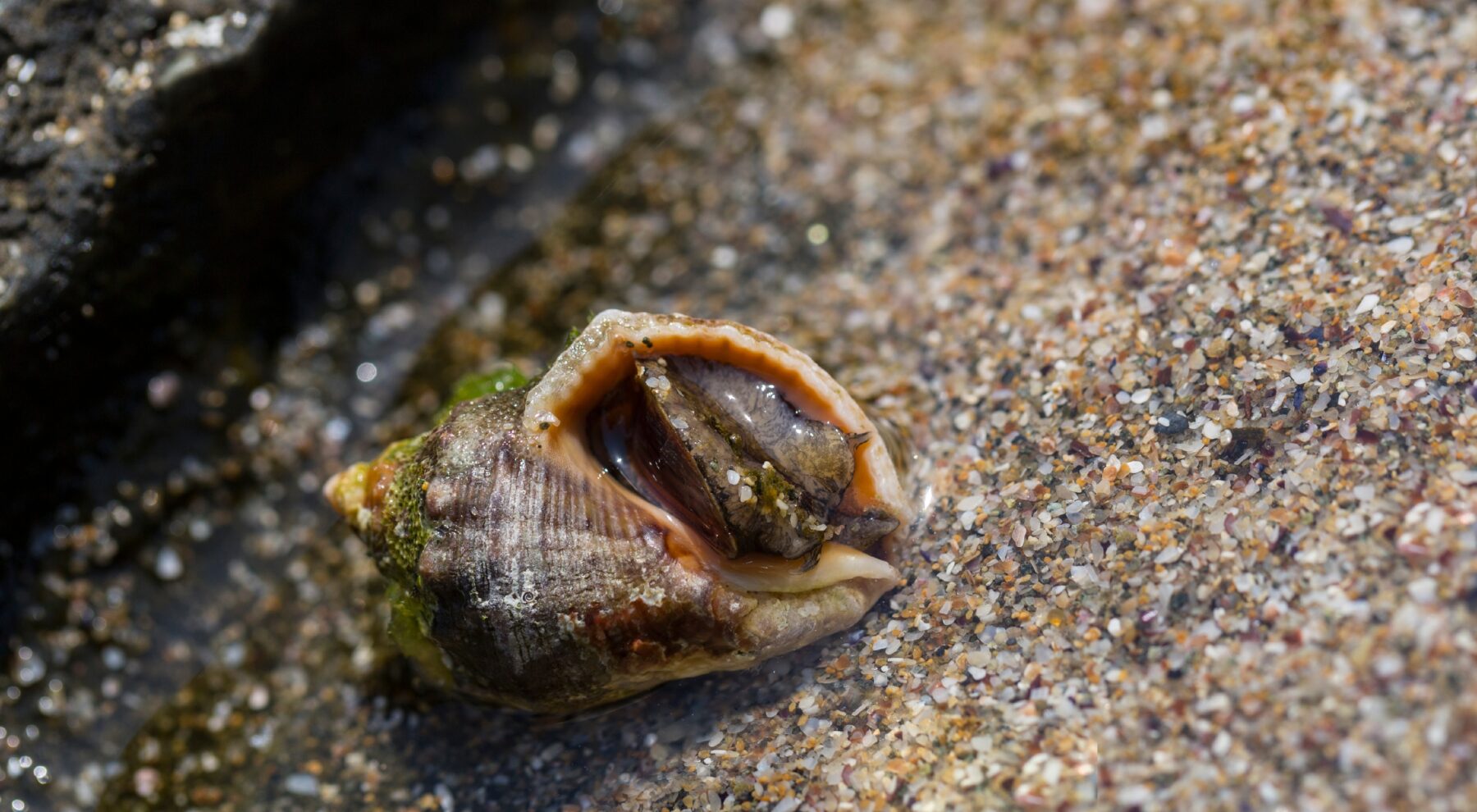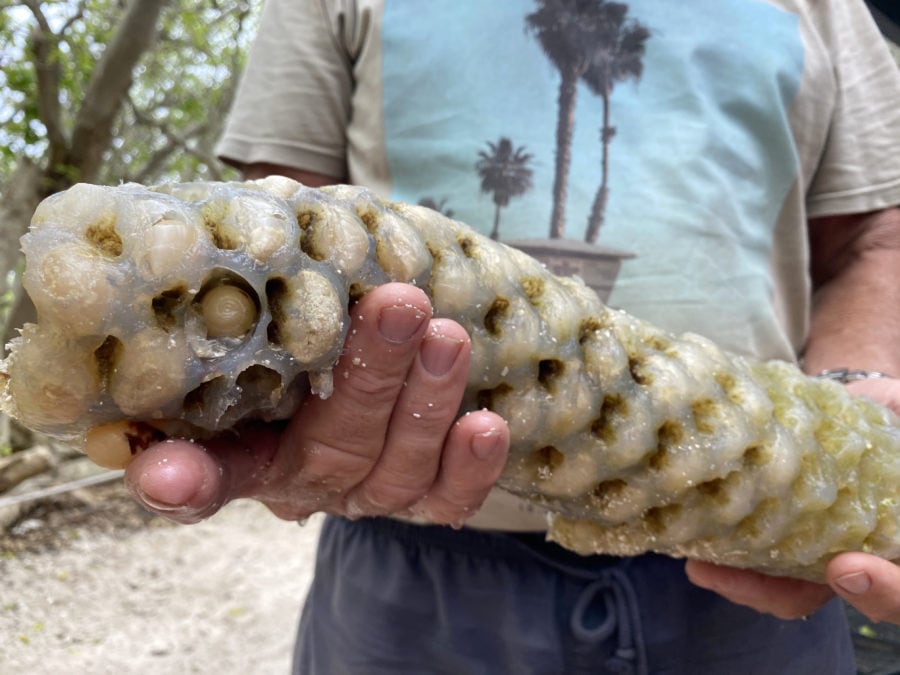What causes these holes in seashells?
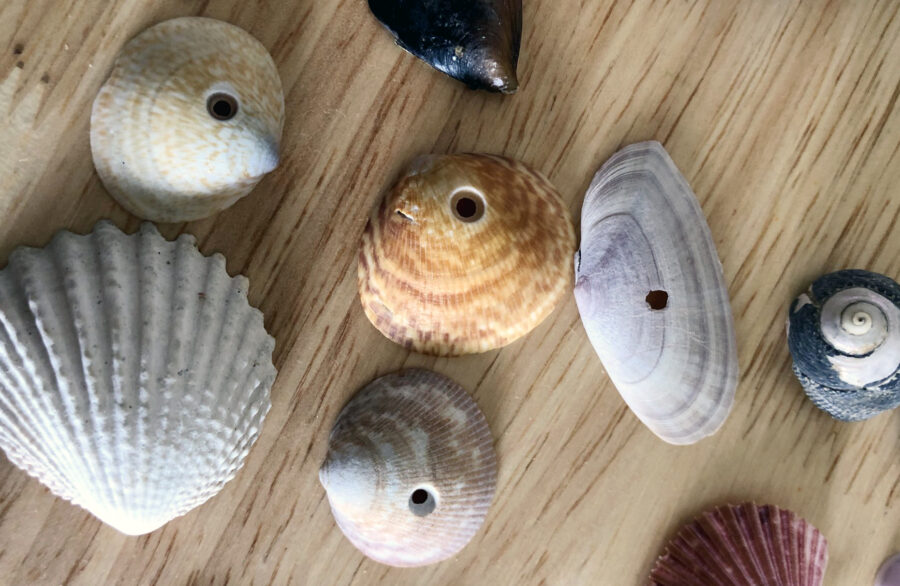
Have you ever noticed these perfectly round holes in seashells?
They’re a common sight on Australia’s beaches, but what’s not common is finding someone who knows why they are there!
It turns out they are caused by these guys – whelks:
While many gastropods (snails and slugs) are herbivorous, whelks belong to the family Busyconidae, a carnivorous group of predatory sea snails.
How do whelks create seashell holes?
This is where it gets pretty dark.
Whelks feed on molluscs, which are generally protected by a hard shell. To get to the tasty morsel inside, whelks have evolved to use their radula (an organ like a tongue) as, essentially, a drill.
First they spit some of their own stomach acid out onto the shell to soften it, before using their radula in a back and forth rhythmic motion to bore a hole. Then, more stomach acid is inserted through the hole to kill the animal inside.
And, that’s it, it’s dinner time! The radula then becomes the whelk’s eating utensil, using it like a straw to slurp out the mollusc.
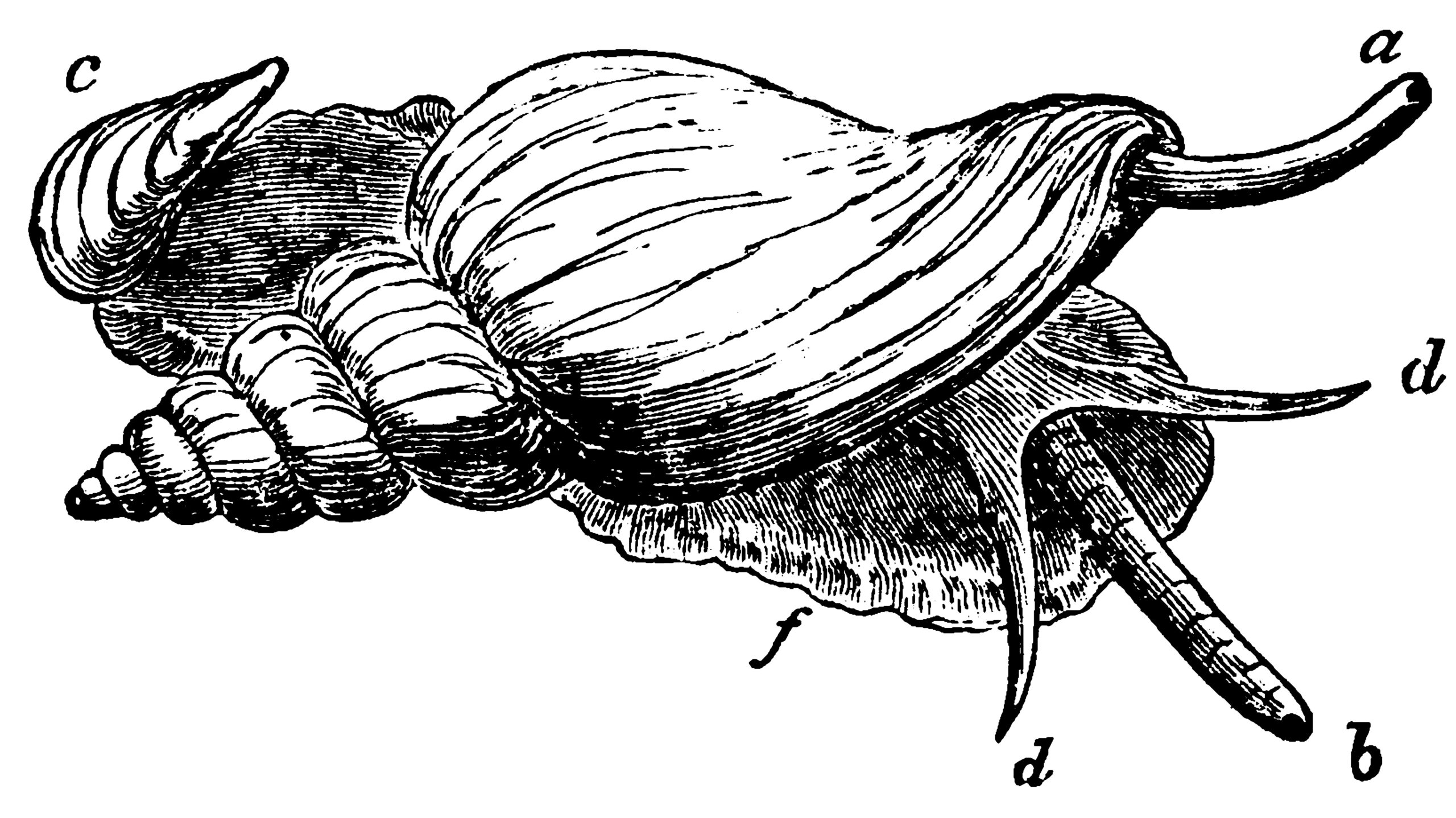
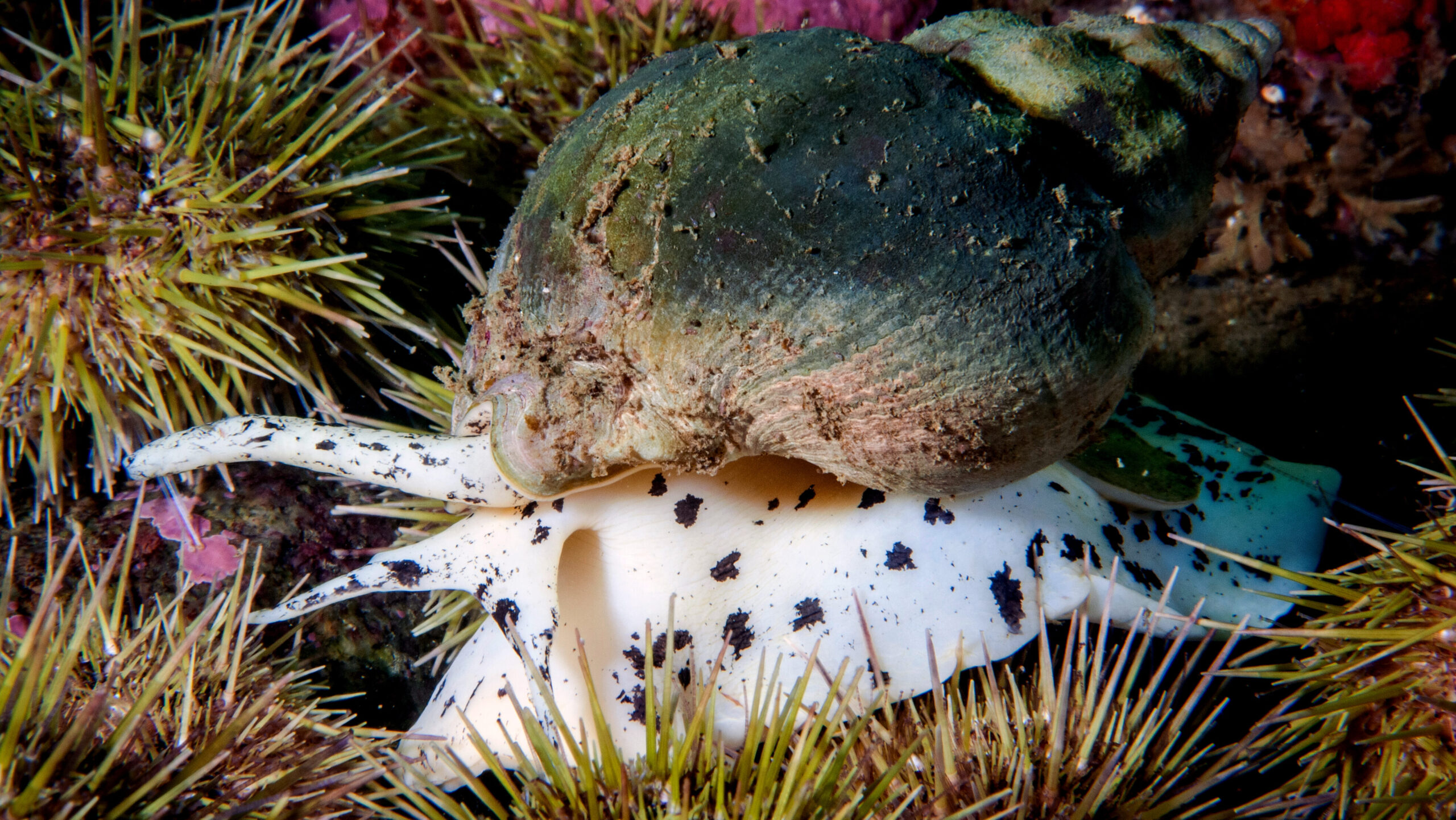
Whelks are found all over the world, with more than 50 individual species.
In Australia, many whelk species are classified as pests, including the rapa (or veined) whelk (Rapana venosa), which preys on native species and can disrupt the balance of seashore ecosystems.

